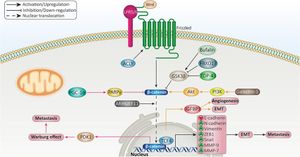Exploring swarm intelligence algorithms significantly enhances performance for early identification of cardiovascular disease.
This study investigates and compares the effectiveness of various swarm intelligence algorithms for selecting key features to improve the early diagnosis of cardiovascular disease (CVD). The research involves researchers focusing on machine learning and cardiovascular disease, utilizing datasets from Kaggle and the Framingham Heart Study. The investigation is part of the current scientific discourse on CVD prediction, reflecting developments leading up to 2023.
The study uses data from multiple heart disease datasets available on Kaggle, as well as the Framingham dataset extensively used for cardiovascular research. Addressing the rising global burden of CVD requires innovative approaches to improve early detection and subsequent treatment outcomes.
The research employs various swarm intelligence algorithms—whale optimization algorithm (WOA), cuckoo search algorithm (CSA), flower pollination algorithm (FPA), Harris hawk optimization algorithm (HHO), particle swarm optimization (PSO), and genetic algorithm (GA)—integrated with machine learning classification models. Swarm intelligence approaches are increasingly being utilized due to their effectiveness at handling large feature sets, addressing overfitting, and enhancing predictive capabilities.
"Swarm intelligence algorithms can effectively screen key and informative feature sets, significantly improve model classification accuracy, and provide strong support for the early diagnosis of cardiovascular diseases. The features selected by the cuckoo search algorithm, particularly with smaller population sizes, provided optimal results on the combined dataset."
Introduction: Present the staggering statistics and relevance of cardiovascular disease globally, setting the stage for the significance of improved prediction techniques.
Background: Explore existing methods for CVD prediction, identifying weaknesses, and the necessity for innovative approaches like swarm intelligence algorithms.
Methodology and Discovery: Describe the datasets used (combined heart disease dataset and Framingham dataset) and detail the six swarm intelligence algorithms evaluated for feature selection.
Findings and Implications: Highlight the findings related to the performance of the algorithms, particularly emphasizing which algorithms yielded optimal features for effective machine learning model training.
Conclusion: Summarize the results, their significance for improving early cardiovascular disease diagnoses, and suggest future research directions, including the potential integration of additional feature types or data sources.



